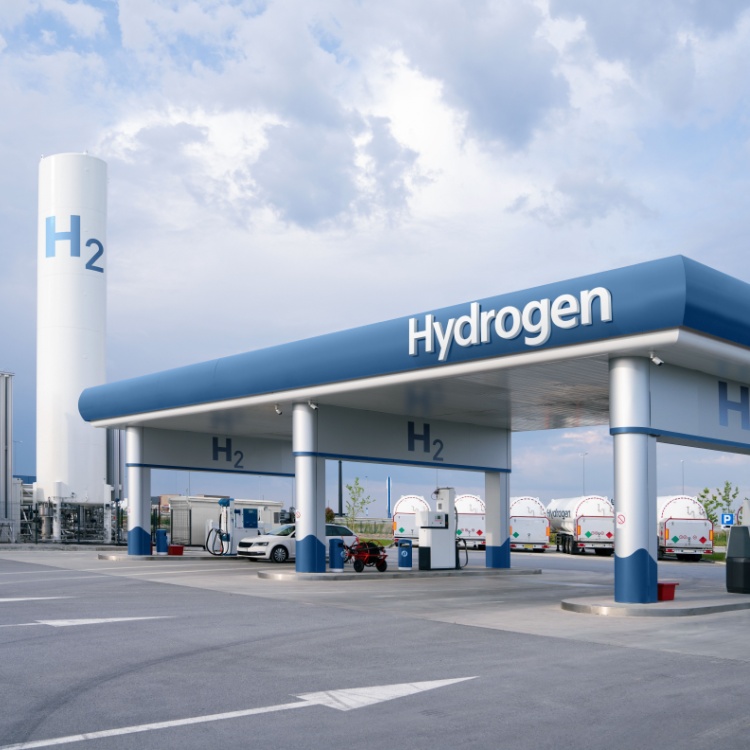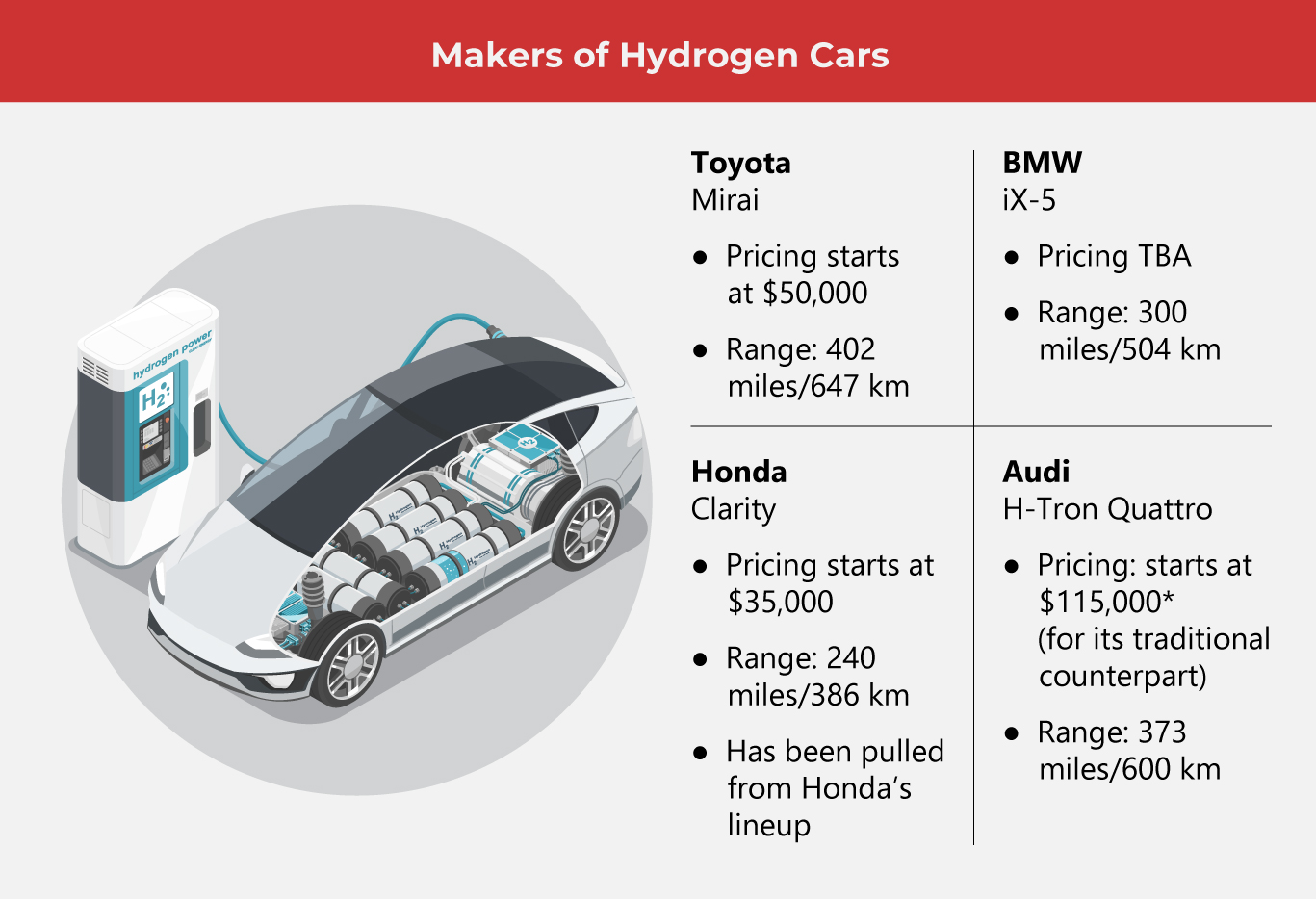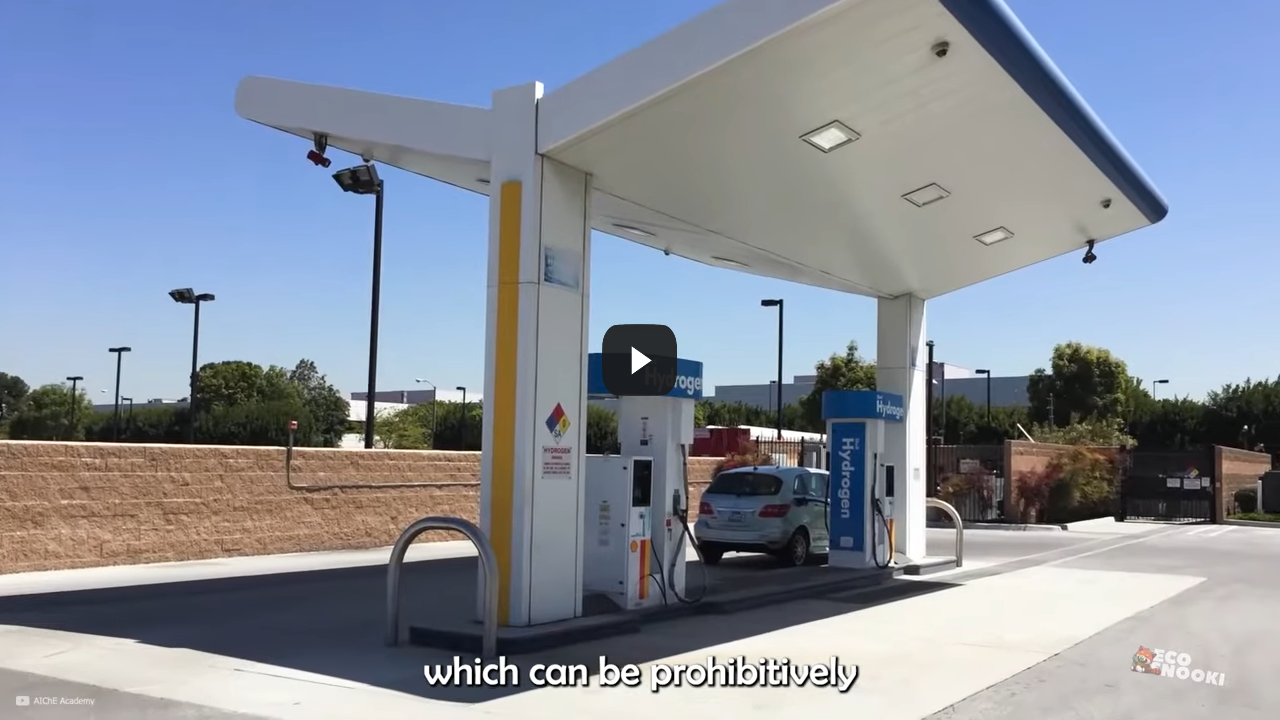What Makes the Hydrogen Car Run?

Millions of electric vehicles (EVs) are on the road today, while hydrogen cars number in the thousands.
What if cars could run on water? That would change the game for automakers for sure. It would end our dependence on gasoline for good, and dramatically reduce carbon emissions for the whole world. It could solve many problems in one fell swoop. Can anyone invent a vehicle that only needs water as fuel?
[Also Read: How to Make Your Own Car Parts]
We aren’t there just yet, but the hydrogen car does exist today. A distant cousin of the electric vehicle, the hydrogen fuel-cell vehicle (HFCV) runs on pure hydrogen and emits water vapor. Several large OEMs are developing hydrogen cars, and more are entering the arena.
The Lay of the Land for Hydrogen Cars
Car and Driver reports that there are only about 15,000 hydrogen cars in existence today, and all of them can be found in the state of California. California is the only state (so far) with the infrastructure to support HFCVs; it’s the only place where HFCV owners can avail of fuel to drive their hydrogen cars.
Right now, there are only a handful of hydrogen car models in the market. Only three OEMs have offered it since 2015—Toyota, Hyundai, and Honda.  The Toyota Mirai is one of the most popular and recognizable hydrogen cars. Presently, the Mirai is the best-selling HFCV. Toyota has earned its reputation in the automotive space as being staunch in its stance on hydrogen cars.
The Toyota Mirai is one of the most popular and recognizable hydrogen cars. Presently, the Mirai is the best-selling HFCV. Toyota has earned its reputation in the automotive space as being staunch in its stance on hydrogen cars.
The Honda Clarity was around for a few years and was marketed as a family SUV. Unfortunately, Honda discontinued production of the Clarity in 2023 due to low demand despite offering purchase incentives for California residents. Honda even provided credit for up to $15,000 in fuel costs and a lease for the hydrogen fuel cell.
Meanwhile, luxury vehicle brands BMW and Audi have unveiled their hydrogen vehicle concepts, the iX-5 and the H-tron Quattro respectively.
How a Hydrogen Car Works
A hydrogen car is similar to an electric vehicle in the sense that it also uses an electric motor to make it run. The difference is that its battery does not rely on lithium-powered batteries like EVs do.
Hydrogen is the most abundant element on earth and behaves as an energy carrier. Hydrogen cars have a fuel-cell stack where pure hydrogen passes through, combining oxygen from the air. As hydrogen reacts with oxygen, electricity is produced, enabling the car to run. Water vapor is also produced, which makes a hydrogen car the greenest alternative to traditional internal combustion engine vehicles. Noxious emissions are eliminated.
Hydrogen Cars: The Pros and Cons
Hydrogen cars sound like the answer to most of our carbon footprint prayers, and that’s the biggest plus it has on its side. Hydrogen cars have absolute zero emissions and they run on renewable energy. It is energy efficient, and they’re a lot quieter than their traditional and EV counterparts. OEMs claim that HFCVs have quick charging times and long usage times.
On the other hand, because hydrogen cars are a rarity still, maintaining it can be very costly. Some even say that maintenance of a hydrogen car can be more expensive than the car itself. Infrastructure for HFCVs outside of California has not yet been built.
Some also approach the hydrogen car with a lot of caution. Safety is a concern. Many associate hydrogen vehicles with potential disasters because their components make them flammable. Some would even go as far as to compare it to the Hindenburg disaster, an infamous moment in history where a hydrogen-filled dirigible exploded mid-flight.
The Challenge of the Hydrogen Car
Hydrogen cars make a lot of sense, with their benefits and advantages making a strong case for development, adoption, and implementation. The technology is here, so what HFCVs need is stable, sustainable, and scalable infrastructure.
Support from private and government institutions may bolster real interest from the public, which may translate to sales. Collaborations between OEMs and tech companies may strengthen HFCVs as another alternative to traditional ICE vehicles.
Some call hydrogen vehicles ahead of their time, but perhaps there needs to be a push in favor of these, especially when weighing the pros and cons against what the world needs to pay attention to the most.
It would be nice to see the hydrogen car become as accepted as hybrid-electric and EV cars today. If HFCVs get as much support for development and infrastructure as EVs do, the general public would have more options for greener solutions.
As one of the Top 20 EMS companies in the world, IMI has over 40 years of experience in providing electronics manufacturing and technology solutions.
We are ready to support your business on a global scale.
Our proven technical expertise, worldwide reach, and vast experience in high-growth and emerging markets make us the ideal global manufacturing solutions partner.
Let's work together to build our future today.
Other Blog




